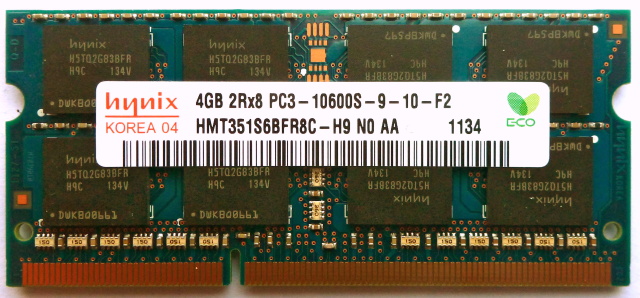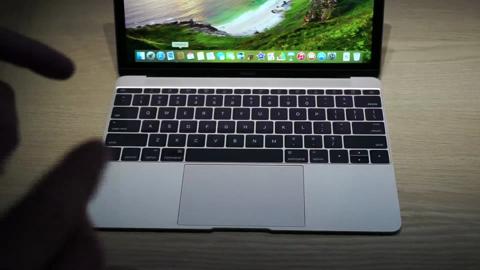
In one of more impressive hacks in recent memory, researchers have devised an attack that exploits physical weaknesses in certain types of DDR memory chips to elevate the system rights of untrusted users of Intel-compatible PCs running Linux.
The technique, outlined in a blog post published Monday by Google's Project Zero security initiative, works by reversing individual bits of data stored in DDR3 chip modules known as DIMMs. Last year, scientists proved that such "bit flipping" could be accomplished by repeatedly accessing small regions of memory, a feat that—like a magician who transforms a horse into a rabbit—allowed them to change the value of contents stored in computer memory. The research unveiled Monday showed how to fold such bit flipping into an actual attack.
"The thing that is really impressive to me in what we see here is in some sense an analog- and manufacturing-related bug that is potentially exploitable in software," David Kanter, senior editor of the Microprocessor Report, told Ars. "This is reaching down into the underlying physics of the hardware, which from my standpoint is cool to see. In essence, the exploit is jumping several layers of the stack."
Getting hammered
DDR memory is laid out in an array of rows and columns, which are assigned in large blocks to various applications and operating system resources. To protect the integrity and security of the entire system, each large chunk of memory is contained in a "sandbox" that can be accessed only by a given app or OS process. Bit flipping works when a hacker-developed app or process accesses two carefully selected rows of memory hundreds of thousands of times in a tiny fraction of a second. By hammering the two "aggressor" memory regions, the exploit can reverse one or more bits in a third "victim" location. In other words, selected zeros in the victim region will turn into ones or vice versa.
The ability to alter the contents of forbidden memory regions has far-reaching consequences. It can allow a user or application who has extremely limited system privileges to gain unfettered administrative control. From there, a hacker may be able to execute malicious code or hijack the operations of other users or software programs. Such elevation-of-privilege hacks are especially potent on servers available in data centers that are available to multiple customers.
The vulnerability works only on newer types of DDR3 memory and is the result of the ever smaller dimensions of the silicon. With less space between each DRAM cell, it becomes increasingly hard to prevent one cell from interacting electrically with its neighbors. By repeatedly accessing one or more carefully selected memory locations, attackers can exploit this volatility, causing the charge to leak into or out of adjacent cells. With enough accesses, the technique can change the value of a cell. The attack doesn't work against newer DDR4 silicon or DIMMs that contain ECC, short for error correcting code, capabilities.
Mark Seaborn, described as a "sandbox builder and breaker," along with reverse engineer Thomas Dullien, developed two "rowhammer" exploits that, when run as unprivileged processes, were able to gain kernel privileges on an x86-64 Linux system. The first exploit ran as a Native Client module on top of Google Chrome. Once Google developers became aware of the exploit, they disallowed the CLFLUSH instruction that's required to make the exploit work. The second exploit, which ran as a normal Linux process and gained access to all physical memory, will be harder to mitigate on existing machines.
There are other things that made the exploits impressive. Irene Abezgauz, a product VP at Dyadic Security and an experienced penetration testing professional, told Ars:
The Project Zero guys took on the challenge of leveraging the concept of rowhammer into an actual exploit. What's impressive is the combination of lots of deep technical knowledge with quite a bit of hacker creativity. What they did was create attack techniques in which flipping just a single bit in a specific location allows them to execute any code they want with root privileges or escape a sandbox. This is impressive by itself, but they added to this quite a few creative solutions to make it more likely to succeed in a real world scenario and not just in the lab. They figured out ways for better targeting of the specific locations in memory they needed to flip, improved the chances of the attack to succeed by creating ("spraying") multiple locations where a flipped bit would make the right impact, and came up with several ideas to leverage this into actual privileged code execution. This combination makes for one of the coolest exploits I've seen in a while.
The attackers didn't identify the specific models of DDR3 that are susceptible to the attack. While their proof-of-concept exploits targeted a Linux computer running x86-64 hardware, the same technique would likely work against a variety of platforms.
The results are impressive, but for a variety of reasons right now, the attacks appear to be more theoretical than practical. For one, the attack appears to allow only local, rather than remote, exploitation, a limitation that significantly curtails its appeal to real-world hackers. And for another, bit flipping works only against certain pre-determined rows. What's more, rowhammering requires more than 540,000 memory accesses in just 64 milliseconds. Unless refinements are made, the demands could make it impractical for attackers to use the technique to reliably hijack a system.
Bit flipping shouldn't be mistaken as a class of memory corruption exploit, such as a buffer overflow or a use-after-free, both of which allow attackers to funnel malicious shell code into protected regions of a computer. Rowhammering, by contrast, allows for escalation of privileges, which while serious, is a much more nuanced type of incursion. Rob Graham, CEO of Errata Security, published this blog post that details additional challenges and technical details.
Still, the ability to exploit physical weaknesses in the hardware is a highly novel type of attack that breaks new ground and may not be easy to remedy.
"This is not like software, where in theory we can go patch the software and get a patch distributed via Windows update within the next two to three weeks," Kanter, of the Microprocessor Report, said. "If you want to actually fix this problem, we need to go out and replace, on a DIMM by DIMM basis, billions of dollars' worth of DRAM. From a practical standpoint that's not ever going to happen."



You must login or create an account to comment.